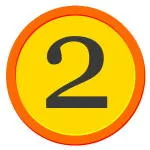![Write a Successful Fundraising Plan [Free Templates] Write a Successful Fundraising Plan [Free Templates]](https://www.dojiggy.com/files/sites/164/2022/11/Write-a-Successful-Fundraising-Plan-in-6-Simple-Steps-jpg.webp)
It’s not always easy to know where to start with fundraising. Although it may seem like a complicated process, it doesn’t have to be if you create a solid fundraising plan before you begin. With the proper guidance and tools, you’ll find it easier than you think.
This blog will guide you through the process of developing an annual fundraising plan so that your organization can maximize funds and impact for your cause. We’ve even thrown in a few example fundraising plan templates.

What is an Annual Fundraising Plan?
Annual fundraising action plans provide a detailed layout of a nonprofit’s future fundraising projects, goals, and activities for the year and how to achieve them.
Here’s what to include in your annual fundraising plan:
- Budgeting
- Specific fundraising goals
- Clear timelines
- Details of fundraising events and campaigns
- Long and short-term strategies to accomplish your nonprofit’s goals
- Available resources to meet those objectives
Why Does Your Organization Need a Fundraising Action Plan?

Many nonprofits, particularly smaller charities and groups, operate without a fundraising plan. When someone has an idea for a campaign, these organizations put together a host committee and start planning without firm goals and objectives. Sometimes it’s hard to figure out what needs to be done next or if goals are reached in a case like this.
This is where your fundraising plan comes in handy. With clearly defined goals and appointed roles, a solid fundraising plan will help to ensure that your nonprofit’s strategies are well organized, run smoothly, and as successful as possible. Also, with a strong fundraising plan, you can take the time, energy, and creativity required to find new donors and develop the right strategies to smash your nonprofit’s goals.
Create an Effective Fundraising Plan in 6 Simple Steps
Designing a successful annual fundraising plan enables your nonprofit to track and monitor its progress, which is vital for mission fulfillment. So, let’s help your organization create long-term strategies and achieve your desired results by giving you the tools to create an effective fundraising plan in 7 simple steps.
Step 1: Decide Who and When to Write the Plan

Although starting your fundraising plan can feel like a daunting task, the longer you put it off, the more likely you will regret not doing it sooner. Just think – every minute you waste thinking about starting is valuable time you could be raising money for your cause. With this in mind, the answer to when you should get planning is now!
Fundraising action plans are generally written by the Development Director or Development department. The nonprofit board of directors and the Executive Director also have an essential role to play, and their feedback and participation are critical. Your nonprofit may also wish to hire a skilled development consultant for assistance; many have experience drafting fundraising plans.
It’s essential to keep up the momentum once you have the hang of writing fundraising action plans. Preferably try to create one by the start of every year, or write a two, three, or five-year plan and revise it at the start of each year.
Step 2: Define Fundraising Goals

Establishing a clear fundraising goal will help your group to design an effective fundraising plan. From the get-go, define your goals and objectives for your yearly fundraising processes.
Ask your committee to determine the following:
- How much money do you need to raise?
- What resources do you have available?
- What do you plan to do with the money raised?
- What is your operating budget?
- What other outcomes do you want from your campaigns?
Don’t leave these things to chance. Keep your eye on the prize throughout the event planning phase to help ensure success.
Check out our free printable Fundraising Goal Planner template here.
Step 3: Analyze Past Fundraising Efforts

If you don’t know where you went wrong, how can you improve next time? This is a crucial tip when it comes to creating your fundraising plan. Refer to the previous year’s fundraising events to evaluate their successes and failures. Ask yourself:
- Did you meet your objectives? If not, why not?
- What went right? How can we build on that to make it an even bigger success?
- Did we stay within budget?
- What unexpected costs did we encounter?
- What benefits did we generate? (such as brand awareness, income, donors, and sponsors)
By asking the right questions and analyzing past fundraising efforts, you’ll be on your way to designing an effective fundraising plan that will bring success to future events.
Step 4: Identify Current Resources and Gaps

Outlining clear fundraising goals is one thing, but your nonprofit needs many resources to meet them. It’s important to determine what you have at hand and what you’ll need to obtain to achieve your goals successfully. Create a list that can be regularly updated with everything and everyone available to support your campaign.
This can include:
- How many staff members, volunteers, sponsors, board members, and vendors do you have?
- How many hours are they willing and able to contribute to fundraising efforts?
- What is the annual budget?
- Do you need to outsource anything to get the job done more effectively? How will that affect the budget?
Step 5: Map out a Timeline to Get it Done

It can be challenging to keep track of everything that’s happening within your organization. This is where creating an effective timeline comes in handy. Help your nonprofit stay organized and keep tabs on your projects and goals by:
- Setting realistic deadlines for each stage of your fundraising campaigns
- Highlighting special occasions and other key dates in your fundraising plan
- Pinpointing how much time you have to achieve each goal
- Identifying campaign milestones and tracking their progress
Don’t fail at the last hurdle by not building or sticking to a solid timeline. Make sure to always include one and if in doubt, remember that a detailed timeline forces you to think critically about your fundraising choices and offers priceless advice on your actions as the year goes on.
Check out our free printable Annual Fundraising Planner template here.
Step 6: Establish Yearly Strategies

Once you’ve identified your fundraising goals and available resources, you’ll need to list ways to achieve your desired results. Are you planning to raise all the money you need this year? Or is the campaign part of a longer-term project, such as a two or three-year capital campaign?
The best approach is to develop your annual strategies using donor patterns and knowledge of your donor base. There are countless strategies to meet your fundraising goals; here are some of the most popular:
- Asking for donations from individuals
- Selling custom merchandise
- Fundraising events – walk-a-thons, auctions, and raffles
- P2P Crowdfunding campaigns
- Corporate Giving – Gift Matching programs
- Grants from governments, corporations, and foundations
- Recurring giving and membership campaigns
- Board Fundraising
- Direct mail campaigns
- Social media hype with online giving options
Check out our free printable Fundraising Event Planner template here.
As you can see, the list of ways to reach your fundraising goals is incredibly varied. This is an excellent opportunity to show how diverse your nonprofit is by applying a creative mix of fundraising strategies. Use your fundraising action plan to list which tactics work well together and which don’t. Remember, fundraising through multiple income streams can boost your nonprofit’s exposure, profitability, and awareness beyond what you might think imaginable.
Fundraising Back-up Plans are a Must

Having a sound fundraising action plan is great, but what do you do when the unexpected happens? Contingency planning is a vital part of your fundraising plan to ensure everything runs as smoothly as possible and keeps your donors happy. Here are a few ideas for backup plans that could end up saving your fundraising event:
● Be Ready to Go Virtual or Hybrid
If we’ve learned anything during the last couple of years, it’s how the show must go on, regardless of the circumstances. Switching your nonprofit’s fundraising event from in-person to a hybrid or virtual format is a great example. Make big savings, promote inclusivity, and boost participation numbers and outreach by offering online options.
● How Flexible Are Your Contracts and Vendors?
If you don’t have a backup plan, unexpected cancellations could be disastrous for your fundraising budget. When organizing a fundraiser, it is critical to verify how strict your contracts are and opt for flexibility, cancellation clauses, and adaptable vendors and partners.
● Make it Simple and Convenient to Donate Online
Ideally, your annual action plan will be full of projects, fundraising campaigns, and key events. But what happens to donations if anything is postponed or canceled at the last minute? This is where online giving options can save the day! Provide online bidding for auctions, donation buttons on your fundraising pages, and online ticketing and registration for a safe and seamless experience for your donors and staff.
Free Nonprofit Fundraising Plan Templates
Fundraising plans don’t need to be complicated. Use our free sample fundraising plans to get started.
Fundraising Goal Planner Template
Annual Fundraising Planner Template
Fundraising Event Planner Template
Fundraising Plan Conclusions
A solid fundraising plan can make or break your nonprofit’s charity efforts. Remember that your plan is a living document. It’s forever adapting, evolving, and improving along the way. Make sure to add regular changes and updates when necessary to optimize the success of your fundraising campaigns. Ideally, you want to review the plan monthly to ensure you’re on track. So, take these simple steps and start writing.

![5 Best School Fundraising Catalog Companies [for 2024] 5 Best School Fundraising Catalog Companies [for 2024]](https://www.dojiggy.com/files/sites/164/2023/07/6-Best-School-Fundraising-Catalog-Companies-271x282.webp)

